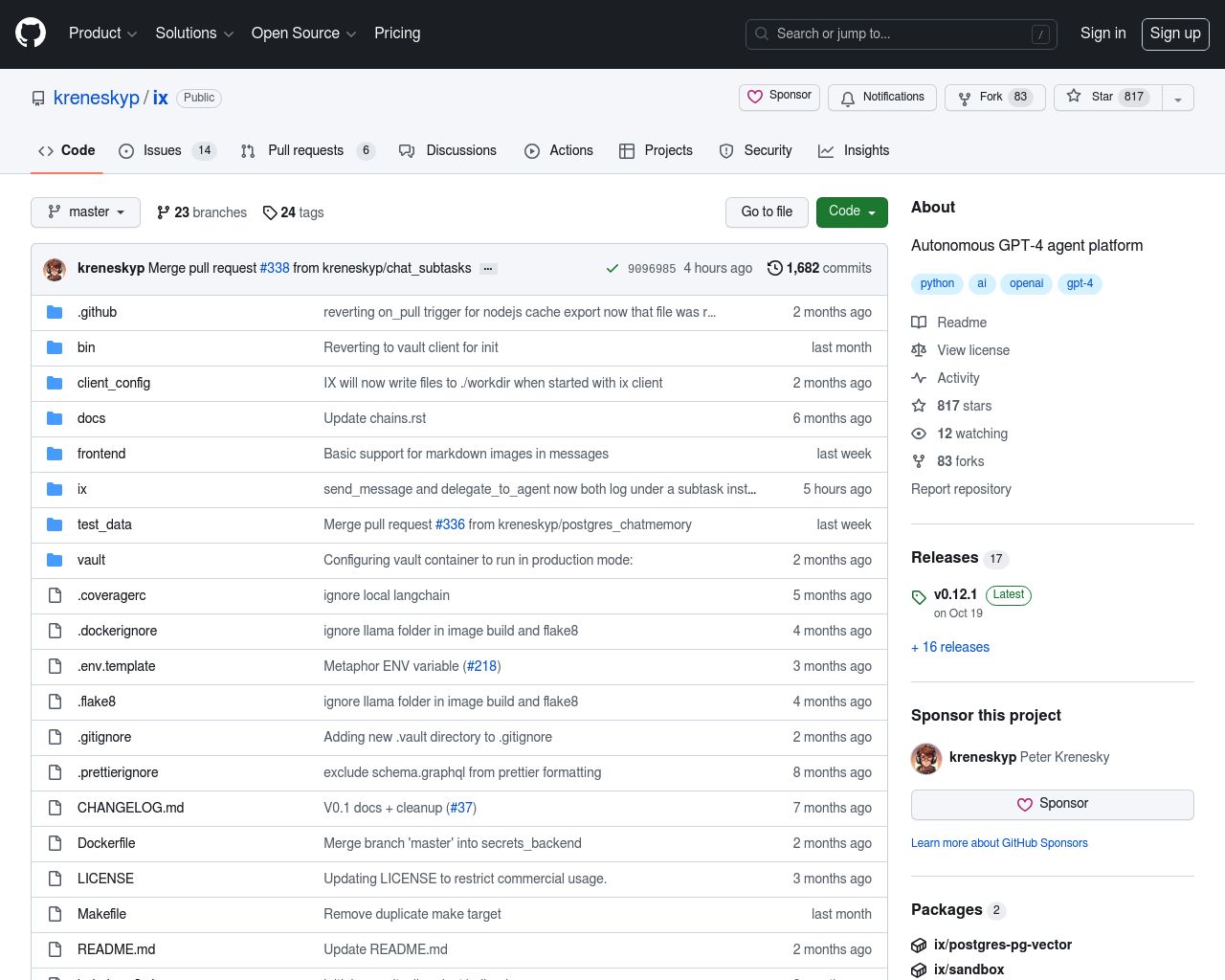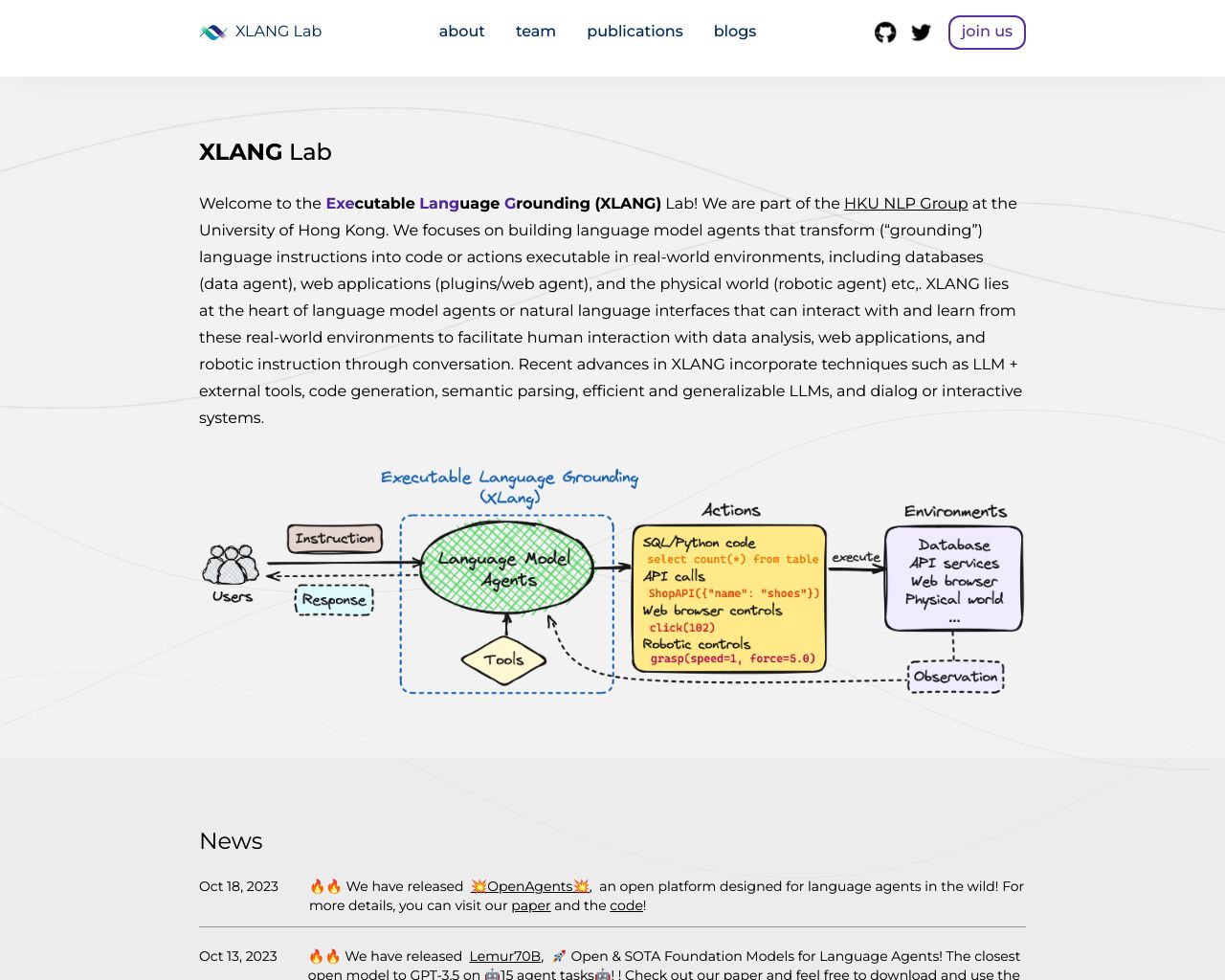IX And OpenAgents: A Comprehensive Comparison
AI agent platforms transform how businesses automate tasks and solve complex problems. Agent iX and OpenAgents offer unique approaches to AI development, each with distinct strengths. Agent iX provides a visual builder for creating customizable agents, while OpenAgents specializes in task-specific agents for data analysis and web browsing. This comparison explores their key features, capabilities, and limitations. We’ll examine how these platforms stack up against SmythOS, our comprehensive solution that combines visual building, multi-agent collaboration, and robust security features. Whether you’re a developer seeking powerful customization tools or a business leader looking for scalable AI solutions, this analysis will help you navigate the evolving landscape of AI agent platforms.
Agent iX Overview
Agent iX stands out as an open-source platform for creating and managing AI agents. The software empowers developers to build autonomous and semi-autonomous agents powered by large language models. Its no-code visual editor allows users to craft agents by connecting nodes in a graph, making agent creation accessible to those without extensive coding experience.
The platform’s core strength lies in its ability to support multiple agents running in parallel. This feature enables seamless collaboration and knowledge sharing among agents, enhancing their problem-solving capabilities. Agent iX integrates with various AI models, including OpenAI, Google PaLM, Anthropic, and Llama, offering flexibility in choosing the most suitable model for specific tasks.
Agent iX stands out as an open-source platform for creating and managing AI agents… empowers developers to build autonomous and semi-autonomous agents powered by large language models.


Agent iX’s architecture focuses on horizontal scalability, utilizing a message queue-driven backend to support numerous agents operating simultaneously. This design allows for efficient handling of complex tasks across various domains, from QA chatbots to code generation and data analysis. The platform’s extensibility enables users to create custom agents and chains, adapting to specific requirements and use cases.
While Agent iX offers robust features for agent creation and management, it lacks some advanced capabilities. The platform does not provide specific details about memory and context management for agents, which could limit long-term task handling. Additionally, there’s no mention of features for explainability and transparency, which may be crucial for users requiring insight into agent decision-making processes.
Agent iX’s architecture focuses on horizontal scalability… to support numerous agents operating simultaneously.
Despite these limitations, Agent iX presents a compelling option for developers and organizations looking to leverage AI agents for task automation and problem-solving. Its combination of a user-friendly interface, support for multiple AI models, and scalable architecture positions it as a versatile tool in the rapidly evolving landscape of AI agent platforms.
OpenAgents Overview
OpenAgents introduces a versatile platform for integrating AI agents into everyday tasks. The system revolves around three specialized agents: Data Agent for complex data analysis, Plugins Agent with over 200 integrated tools for daily activities, and Web Agent for autonomous web browsing.


The Data Agent excels in processing large datasets, making it invaluable for roles requiring in-depth data analysis. The Plugins Agent’s extensive library allows users to perform a wide range of tasks, from checking weather to online shopping. The Web Agent, equipped with a Chrome extension, streamlines internet navigation by automating browsing activities.
OpenAgents introduces a versatile platform for integrating AI agents into everyday tasks… three specialized agents: Data Agent for complex data analysis, Plugins Agent… and Web Agent for autonomous web browsing.
OpenAgents emphasizes user-friendliness with its web UI and backend server, making the platform accessible to non-expert users. The system supports deployment on localhost and allows for the integration of new agents and plugins, offering flexibility for developers. However, the platform lacks specific features like memory and context management, constrained alignment, and data encryption.
While OpenAgents provides powerful tools for creating and deploying AI agents, it may fall short in areas such as audit logs for analytics, agent work scheduling, and deployment options like webhooks or site chat. The absence of information on data lake support and file format compatibility could limit its use in certain data-intensive scenarios.
Despite these limitations, OpenAgents’ vision of bridging the gap between expert and non-expert users in AI integration shows promise. The platform’s focus on providing practical solutions for real-world challenges makes it a noteworthy contender in the AI agent builder space, especially for users seeking a balance between functionality and ease of use.
Feature Comparison
Agent iX and OpenAgents offer distinct approaches to AI agent development, each with unique strengths and limitations. Agent iX excels in its visual builder and no-code editor, allowing users to create agents by connecting nodes in a graph. This feature makes agent development accessible to those without extensive coding experience. In contrast, OpenAgents focuses on specialized agents for specific tasks, such as data analysis and web browsing, but lacks a visual builder.
Agent iX supports multiple AI models and enables multi-agent collaboration, facilitating teamwork among AI agents. OpenAgents, while offering powerful specialized agents, does not explicitly mention multi-agent collaboration capabilities. Both platforms support autonomous agents, but Agent iX provides more flexibility in agent creation and customization.
Regarding security and data management, both platforms have gaps. Neither Agent iX nor OpenAgents explicitly mention features like constrained alignment, data encryption, or IP control. Additionally, both lack specific information about memory and context management for long-term task handling. These omissions could limit their applicability in scenarios requiring robust security measures or complex, context-dependent tasks.
In contrast, SmythOS addresses many of these limitations. It offers advanced security features like constrained alignment and data encryption, alongside comprehensive memory and context management. SmythOS also provides a visual builder and supports multi-agent collaboration, combining the strengths of both Agent iX and OpenAgents while addressing their shortcomings in security and data handling.
Feature Comparison Table
| Agent iX | OpenAgents | SmythOS | |
|---|---|---|---|
| CORE FEATURES | |||
| Visual Builder | ✅ | ❌ | ✅ |
| No-Code Options | ✅ | ❌ | ✅ |
| Memory & Context | ❌ | ✅ | ✅ |
| Explainability & Transparency | ❌ | ✅ | ✅ |
| Audit Logs for Analytics | ❌ | ✅ | ✅ |
| Agent Work Scheduler | ✅ | ❌ | ✅ |
| SECURITY | |||
| Constrained Alignment | ❌ | ❌ | ✅ |
| IP Control | ✅ | ❌ | ✅ |
| COMPONENTS | |||
| Data Lakes | ❌ | ❌ | ✅ |
| DEPLOYMENT OPTIONS (EMBODIMENTS) | |||
| Staging Domains | ❌ | ❌ | ✅ |
| Production Domains | ✅ | ❌ | ✅ |
| Deploy as Scheduled Agent | ❌ | ❌ | ✅ |
| DATA LAKE SUPPORT | |||
| Hosted Vector Database | ✅ | ❌ | ✅ |
| Sitemap Crawler | ❌ | ❌ | ✅ |
| YouTube Transcript Crawler | ❌ | ❌ | ✅ |
Best Alternative to Agent iX and OpenAgents
SmythOS stands out as the superior alternative to Agent iX and OpenAgents, offering a comprehensive AI automation platform that addresses the limitations of its competitors. Our drag-and-drop interface simplifies agent creation, making advanced AI accessible to users of all skill levels. Unlike Agent iX and OpenAgents, we provide robust security features, including constrained alignment and data encryption, ensuring your AI applications meet the highest standards of data protection and ethical use.
SmythOS stands out as the superior alternative to Agent iX and OpenAgents, offering a comprehensive AI automation platform that addresses the limitations of its competitors.
Our platform excels in versatility, supporting a wide range of AI models and integrations. While Agent iX focuses on multi-agent collaboration and OpenAgents specializes in specific tasks, SmythOS combines these strengths and enhances them. We enable seamless multi-agent orchestration across various domains, from data analysis to web interactions, all within a single, unified environment.
SmythOS revolutionizes workflow management with features like the Agent Work Scheduler and comprehensive logs and monitoring. These tools provide unparalleled control and visibility into your AI operations, a capability notably absent in both Agent iX and OpenAgents. Our platform’s ability to handle complex, context-dependent tasks through advanced memory and context management sets us apart, addressing a significant gap in competing offerings.
Perhaps most importantly, SmythOS offers unmatched flexibility in deployment options. Whether you need to deploy as an API, webhook, scheduled agent, or integrate with popular platforms like GPT, we provide the tools to make it happen. This adaptability, combined with our scalable architecture, ensures that SmythOS can grow with your business needs, making it the ideal choice for companies looking to leverage AI for long-term success and innovation.
Conclusion
Agent iX and OpenAgents offer unique approaches to AI agent development, each with distinct strengths. Agent iX’s visual builder and multi-agent collaboration capabilities stand out, while OpenAgents excels with its specialized agents for data analysis and web browsing. However, both platforms have limitations in security features and advanced data management.
SmythOS addresses these limitations and combines the strengths of both platforms. Our comprehensive solution offers a visual builder, multi-agent collaboration, and supports specialized agents. We prioritize security with features like constrained alignment and data encryption, ensuring your AI operations remain safe and compliant.
Unlike Agent iX and OpenAgents, SmythOS provides robust memory and context management, enabling more sophisticated, long-term task handling. Our platform also offers unparalleled flexibility in deployment options, allowing you to integrate AI agents seamlessly into your existing workflows, whether as APIs, chatbots, or scheduled tasks.
We invite you to experience the future of AI agent development with SmythOS. Explore our diverse range of AI-powered agent templates to jumpstart your projects, or dive into our comprehensive documentation to understand the full potential of our platform. Ready to revolutionize your AI workflow? Create a free SmythOS account today and join the AI workforce 3.0 revolution.
Last updated:
Disclaimer: The information presented in this article is for general informational purposes only and is provided as is. While we strive to keep the content up-to-date and accurate, we make no representations or warranties of any kind, express or implied, about the completeness, accuracy, reliability, suitability, or availability of the information contained in this article.
Any reliance you place on such information is strictly at your own risk. We reserve the right to make additions, deletions, or modifications to the contents of this article at any time without prior notice.
In no event will we be liable for any loss or damage including without limitation, indirect or consequential loss or damage, or any loss or damage whatsoever arising from loss of data, profits, or any other loss not specified herein arising out of, or in connection with, the use of this article.
Despite our best efforts, this article may contain oversights, errors, or omissions. If you notice any inaccuracies or have concerns about the content, please report them through our content feedback form. Your input helps us maintain the quality and reliability of our information.
